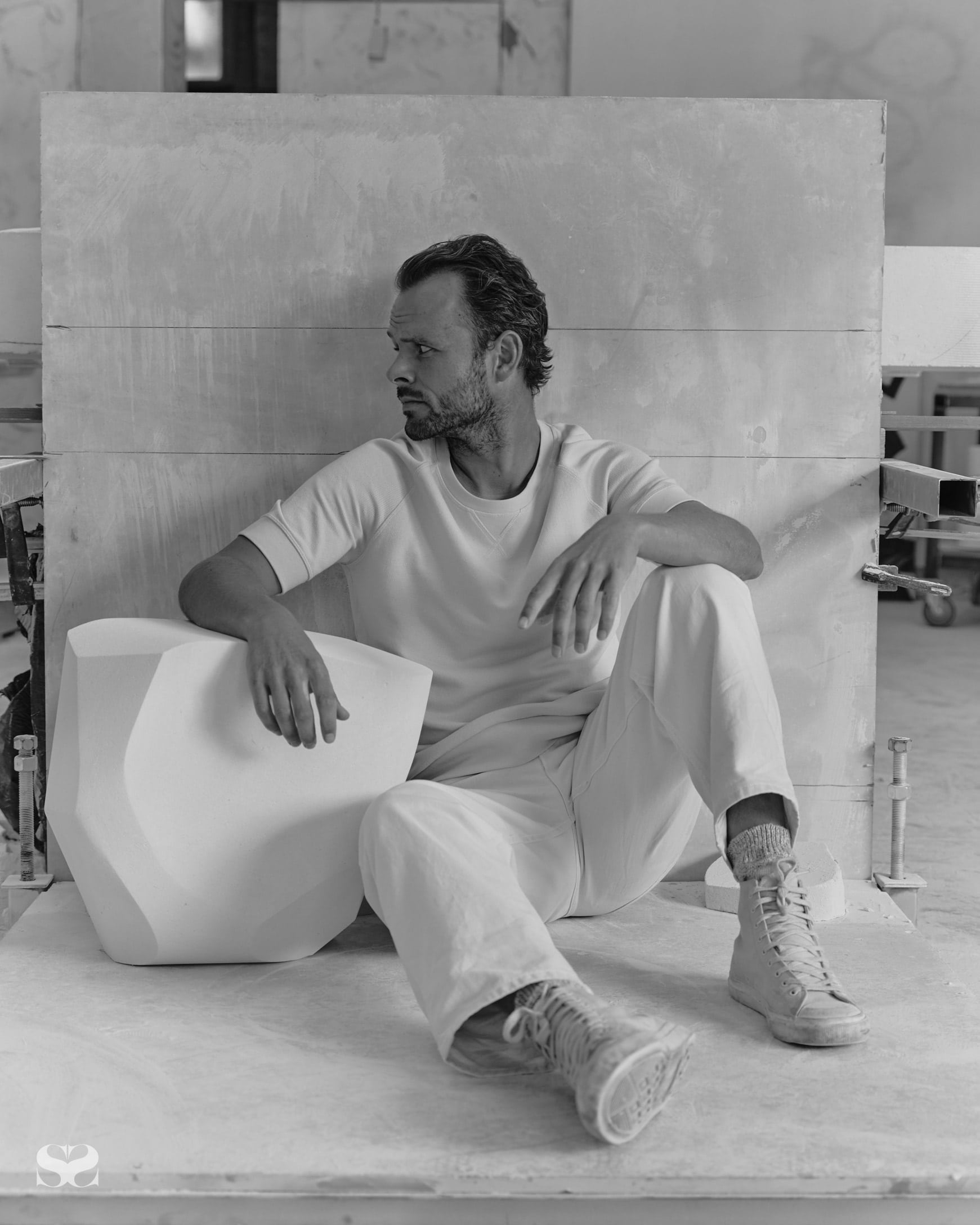
With his instinctive sculptures and tactile formations, denHolm studio’s Steven John Clark is carving out some kind of destiny.
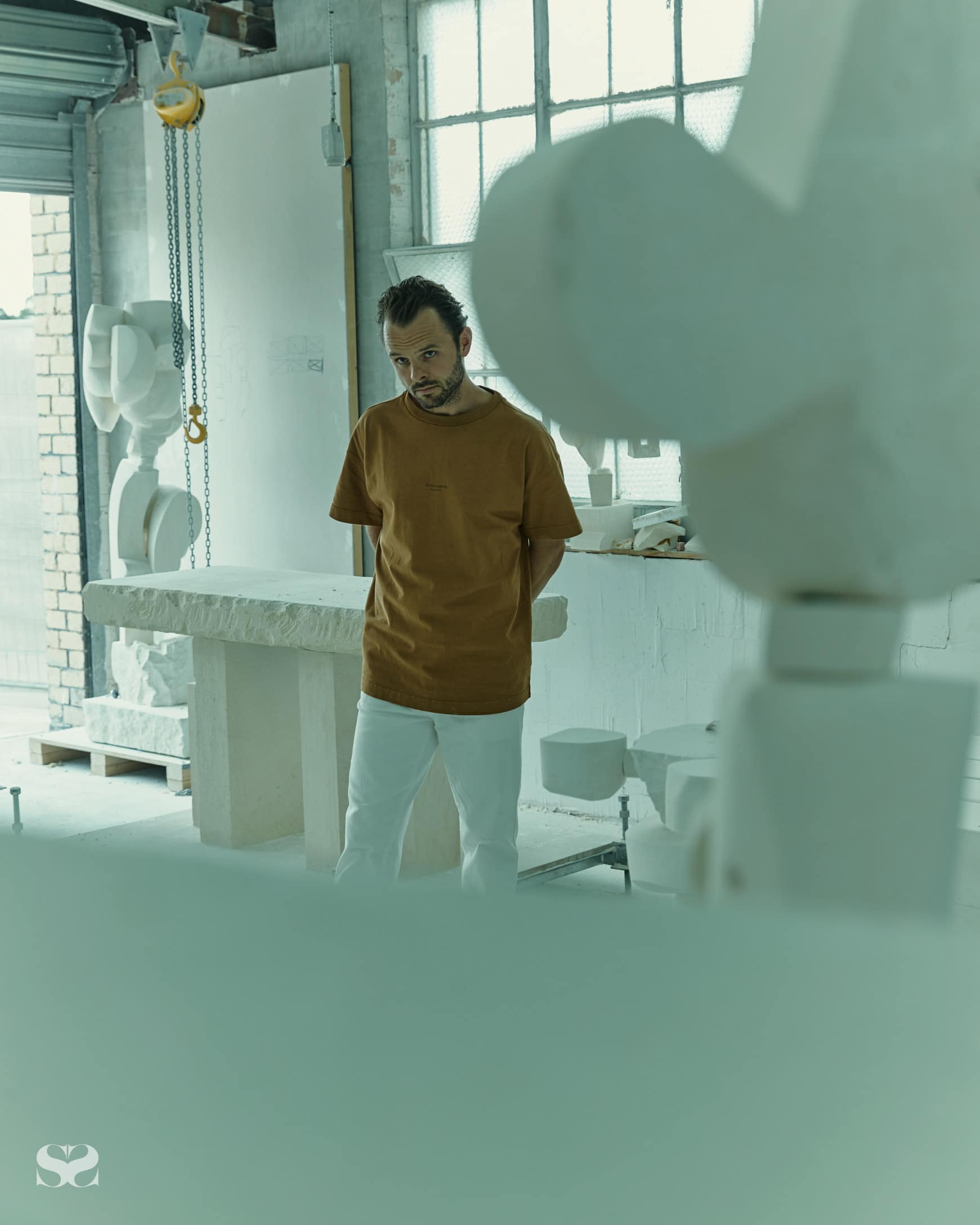
“I made her a stone plinth ... That’s when it all started. People were like, ‘wow that must’ve taken you months to make’ …
It honestly took me a day to make it.”
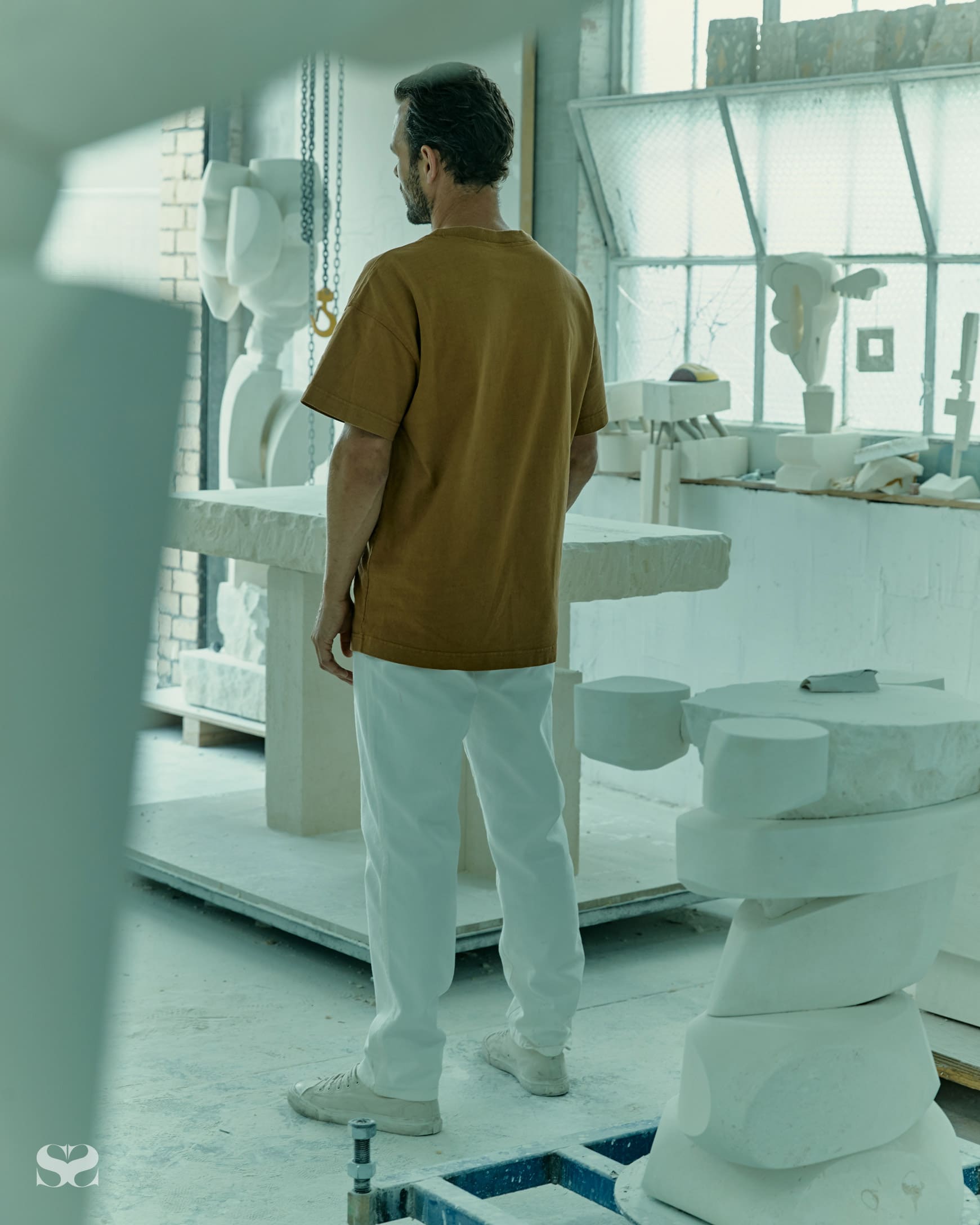
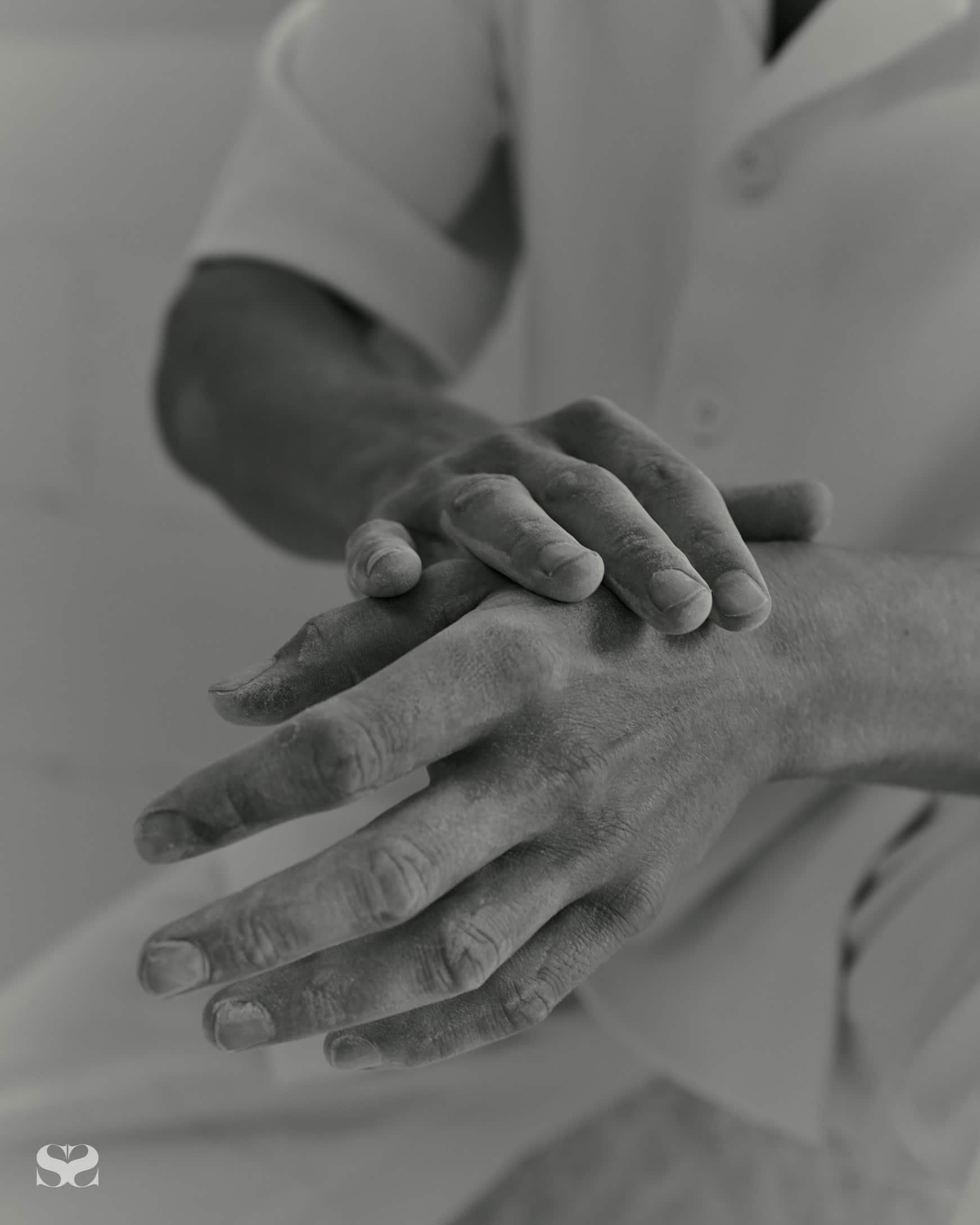
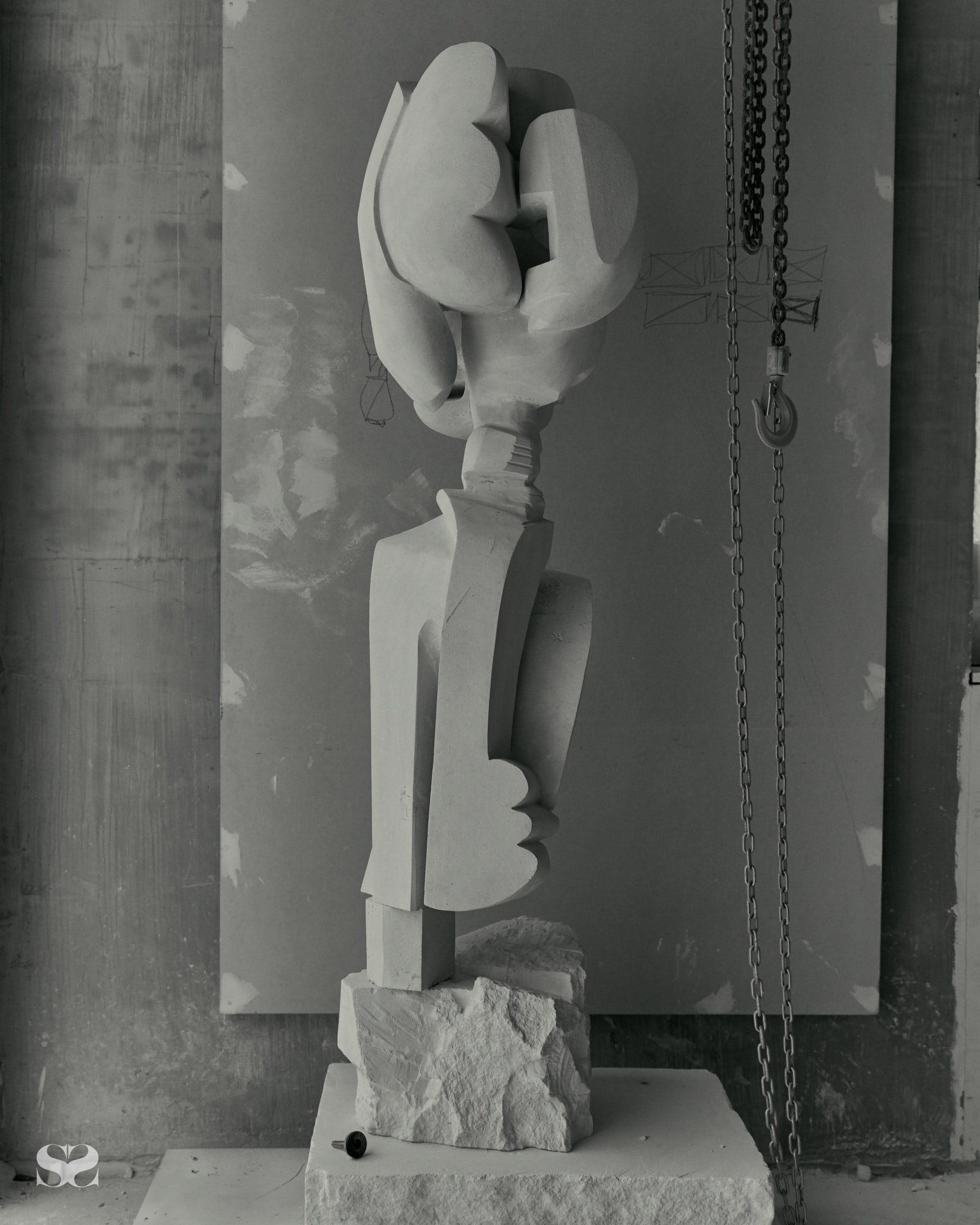
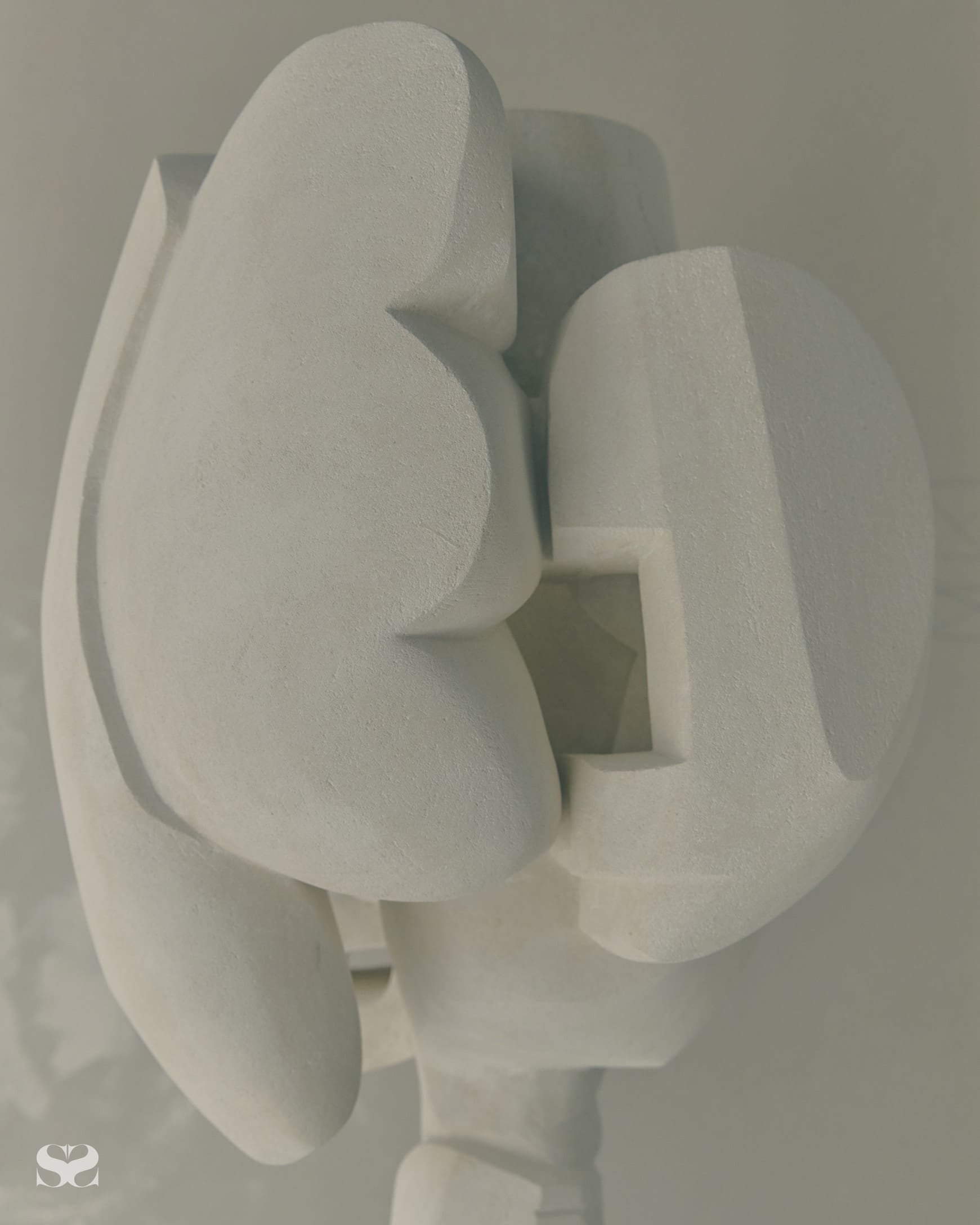
The past, in whatever form it takes, always has a way of catching up to us, ready to be of use. If you had told denHolm’s Steven John Clark 15 years ago that he’d make a name for himself working with stone, he might have laughed in your face. But here in his Melbourne studio, using the tools of his past life, Clark is captivating with his sculpted creations.
Best described as functional art, idiosyncratic planters sit beside large impressionistic carvings. Striking white pieces are carved from chalky Australian limestone – so rich in texture it takes all restraint not to reach out and touch them – seemingly conceived without restriction. It’s an ethos that underpins all of Clark’s creations – imbued in the designer since his youth; he’s wholly disinterested in the ‘conventional’ way of making, rather letting his instinct guide the way.
Born in the small village of Den Holm in south Scotland, Clark was a soccer-obsessed kid who left school at age 16 to pursue a career in the solid, dependable profession of stonemasonry. “You were left to your own devices from an early age,” Clark describes of his upbringing. “We didn’t have much money so you just have to go and make your own games up … I can see that that’s maybe where the creativity started ... I never really took art at school or anything ...”
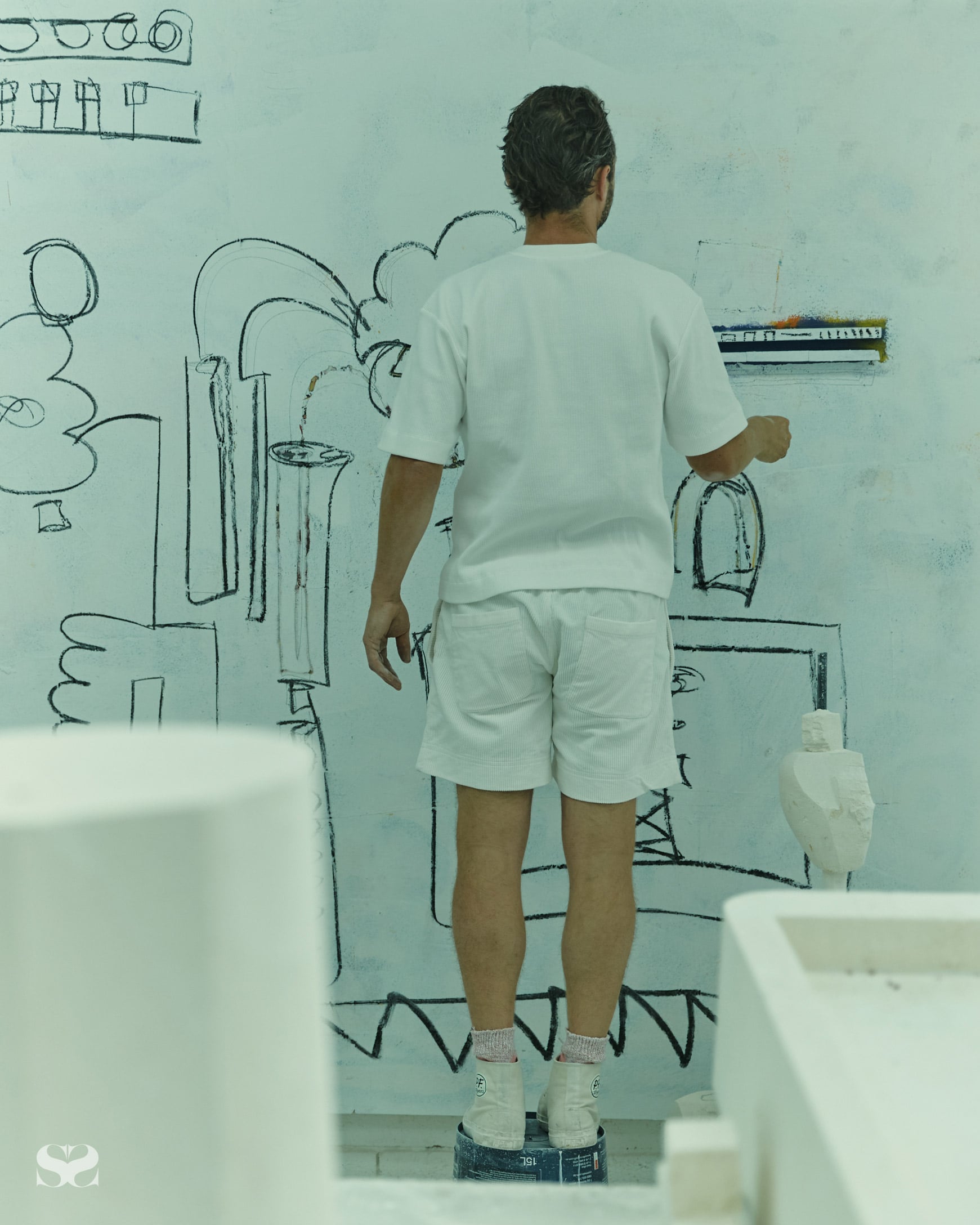
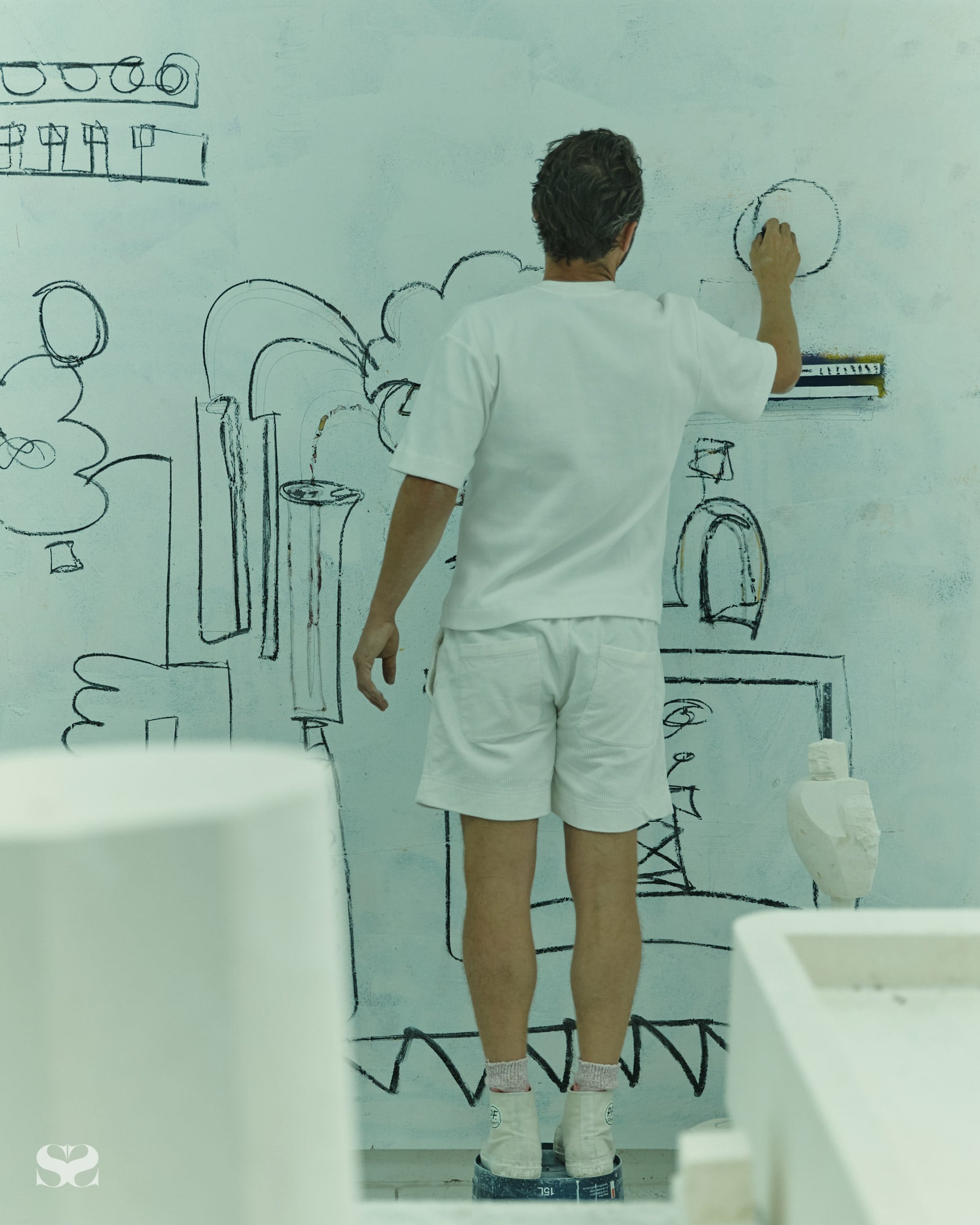
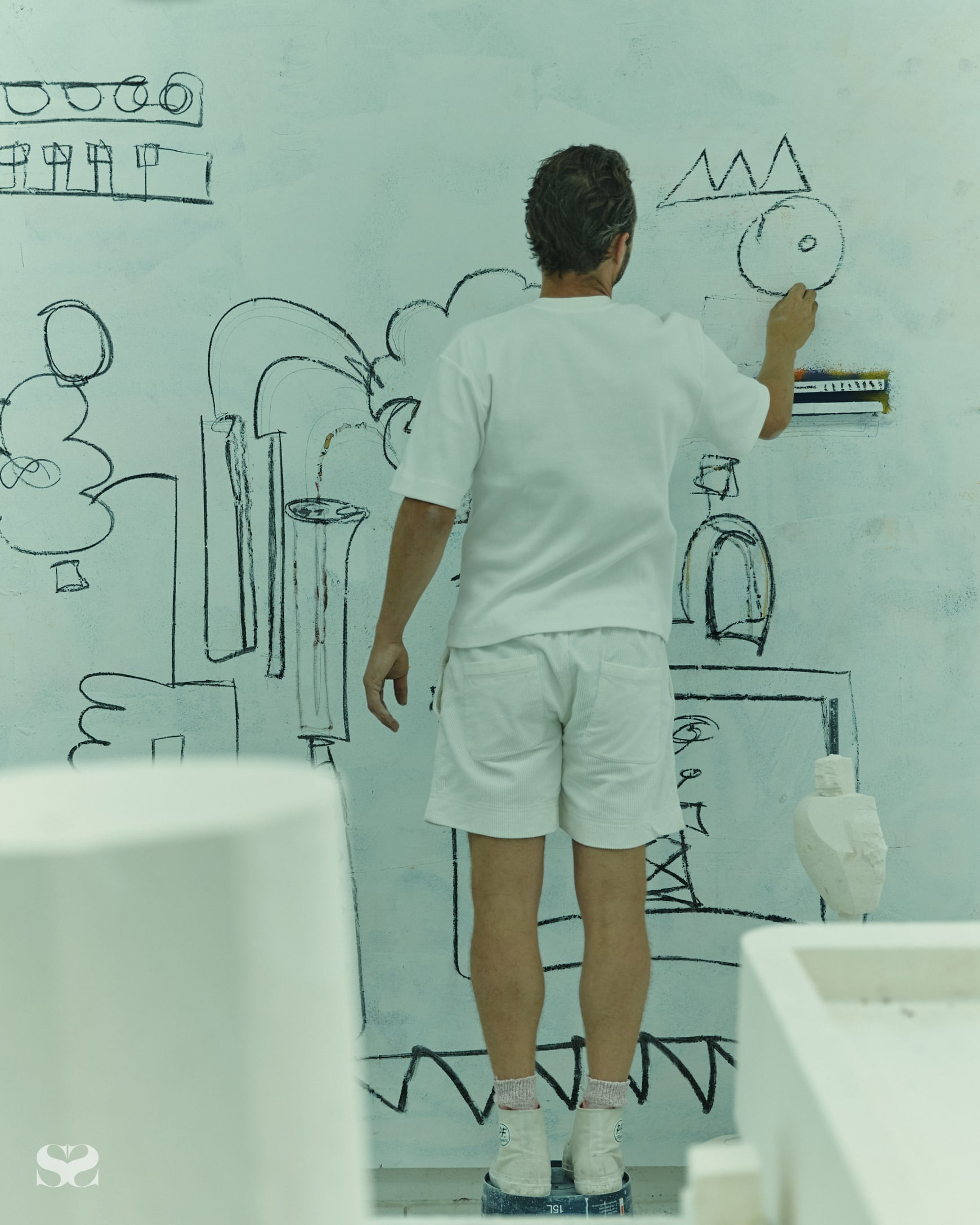
“I don’t see myself working in the one medium for the rest of my life. The one simple fact of what makes me happy is that I know I can create.”
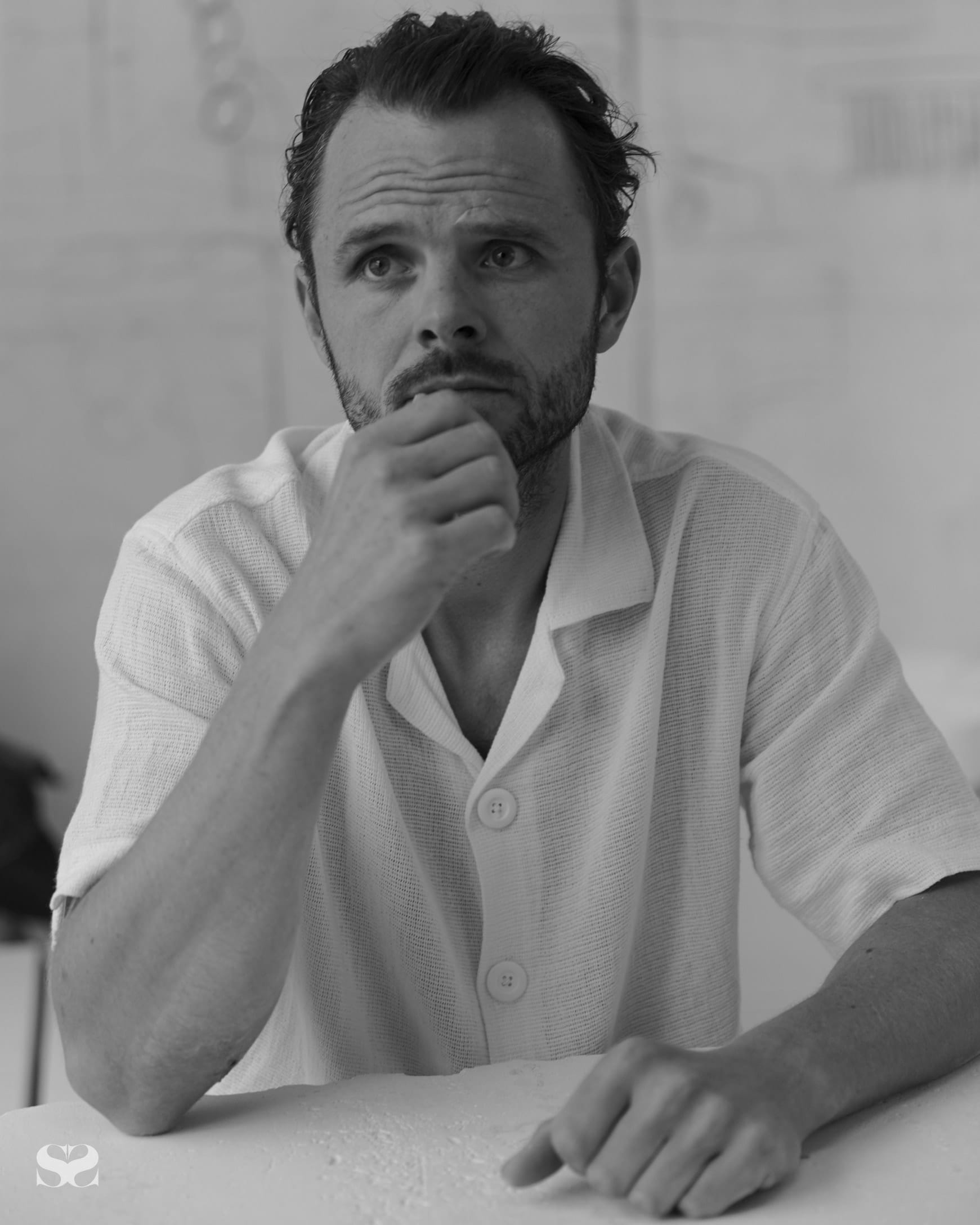
Around the time he left school Clark began going to music festivals in the UK and Ibiza. “You’re at these festivals and all these people have their own costumes, so I decided to make my own,” he recalls. “My friends wanted me to make them some, and before I knew it I was in the spare bedroom on the sewing machines making costumes instead of going to soccer training. That’s what led me to leave stonemasonry to go and study fashion up in Glasgow.” After three years at college, Clark transferred to Manchester Metropolitan University to study embroidery, intent on forging a new path in textiles and design. It proved an intrinsic turning point: it was here that he met his now-wife, artist and photographer Bobby Clark, as well as a lecturer who persuaded him to revisit the profession of his youth.
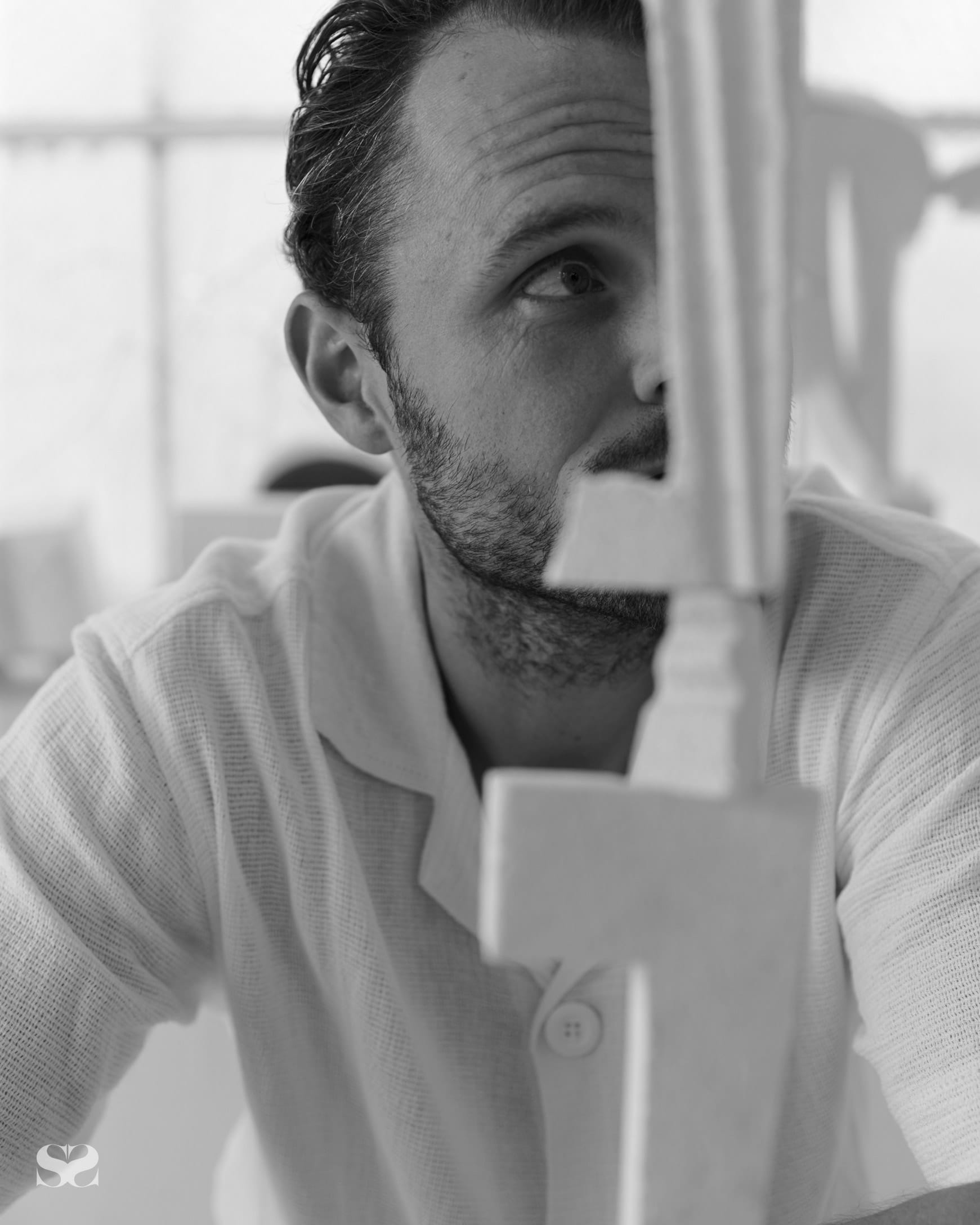
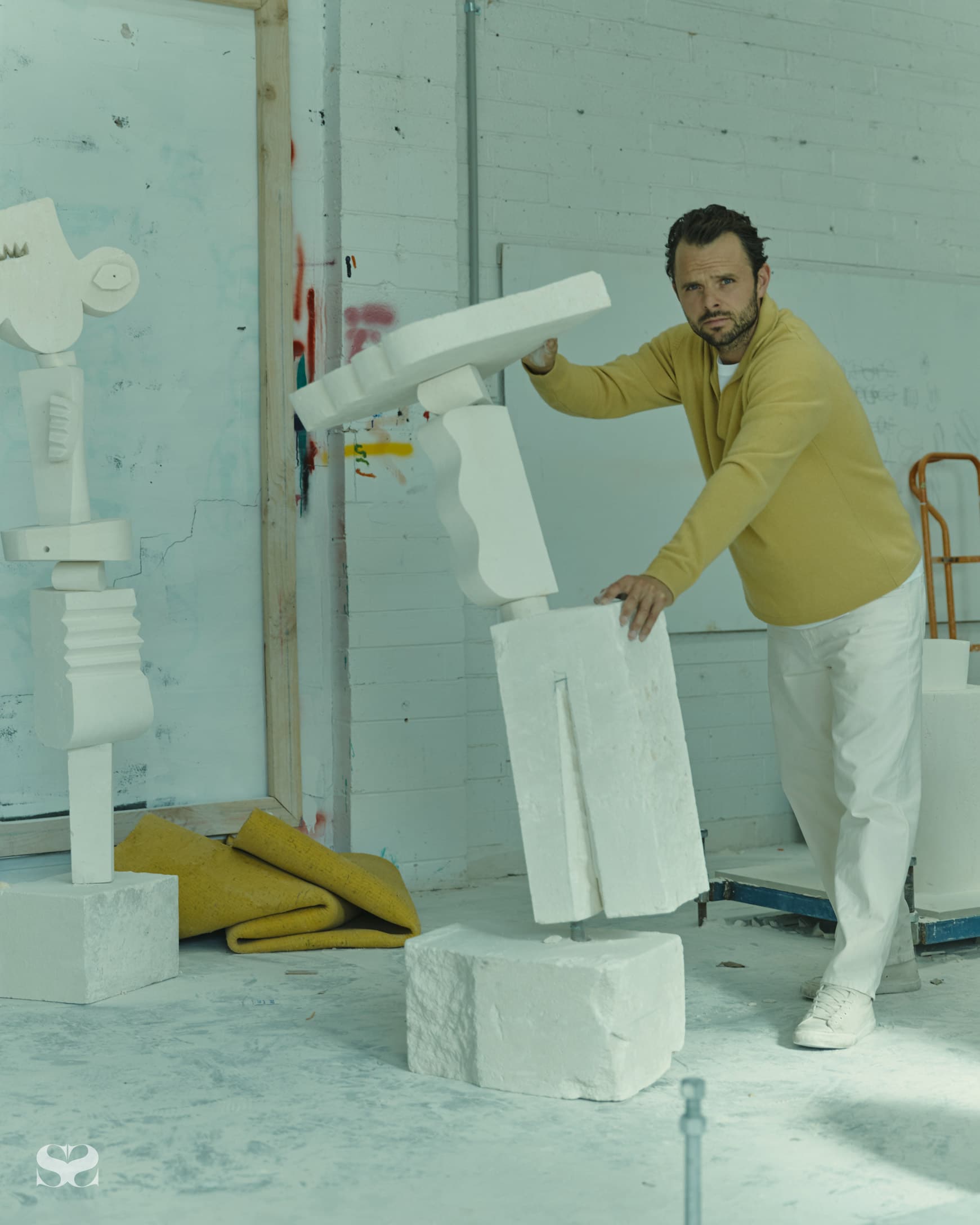
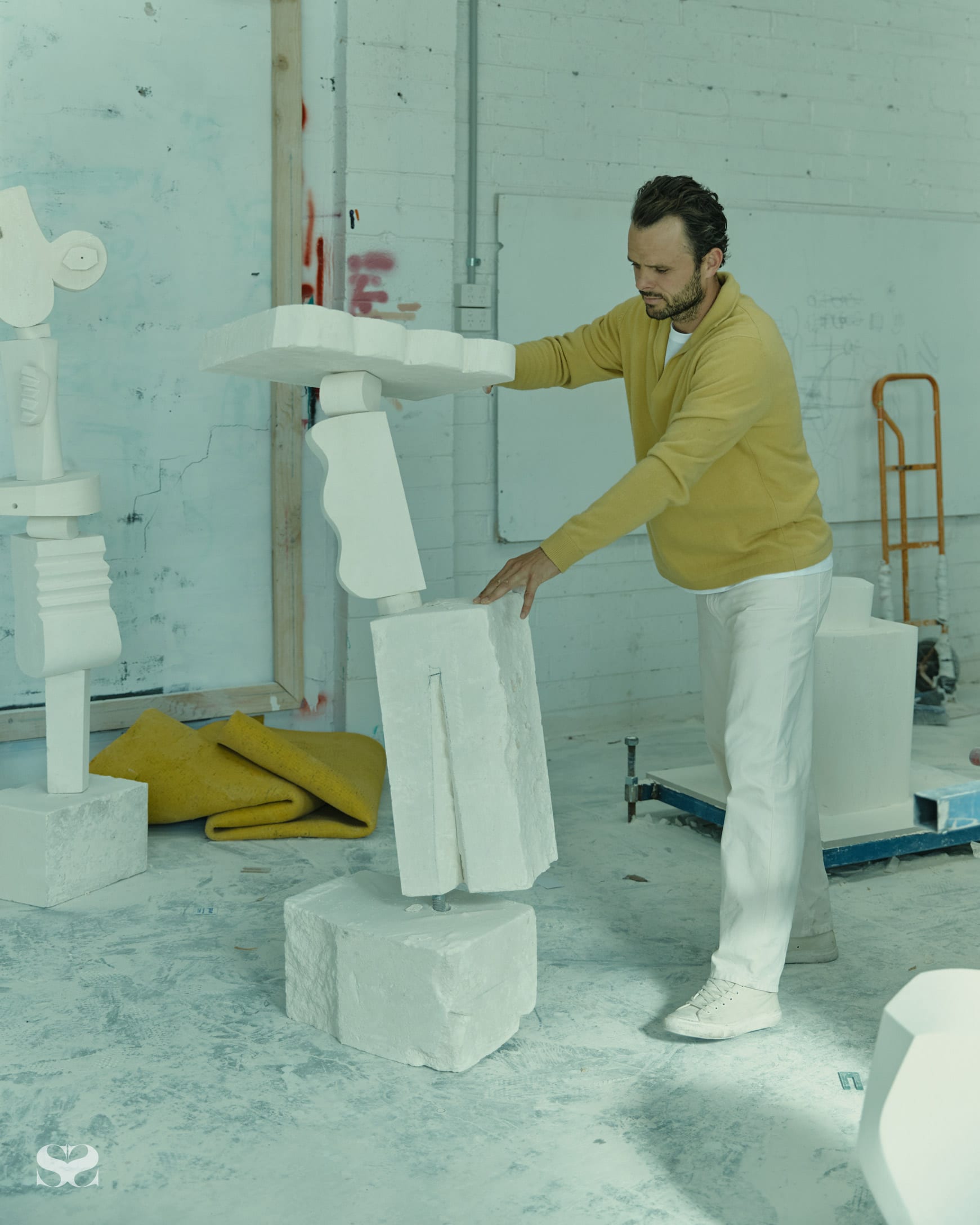
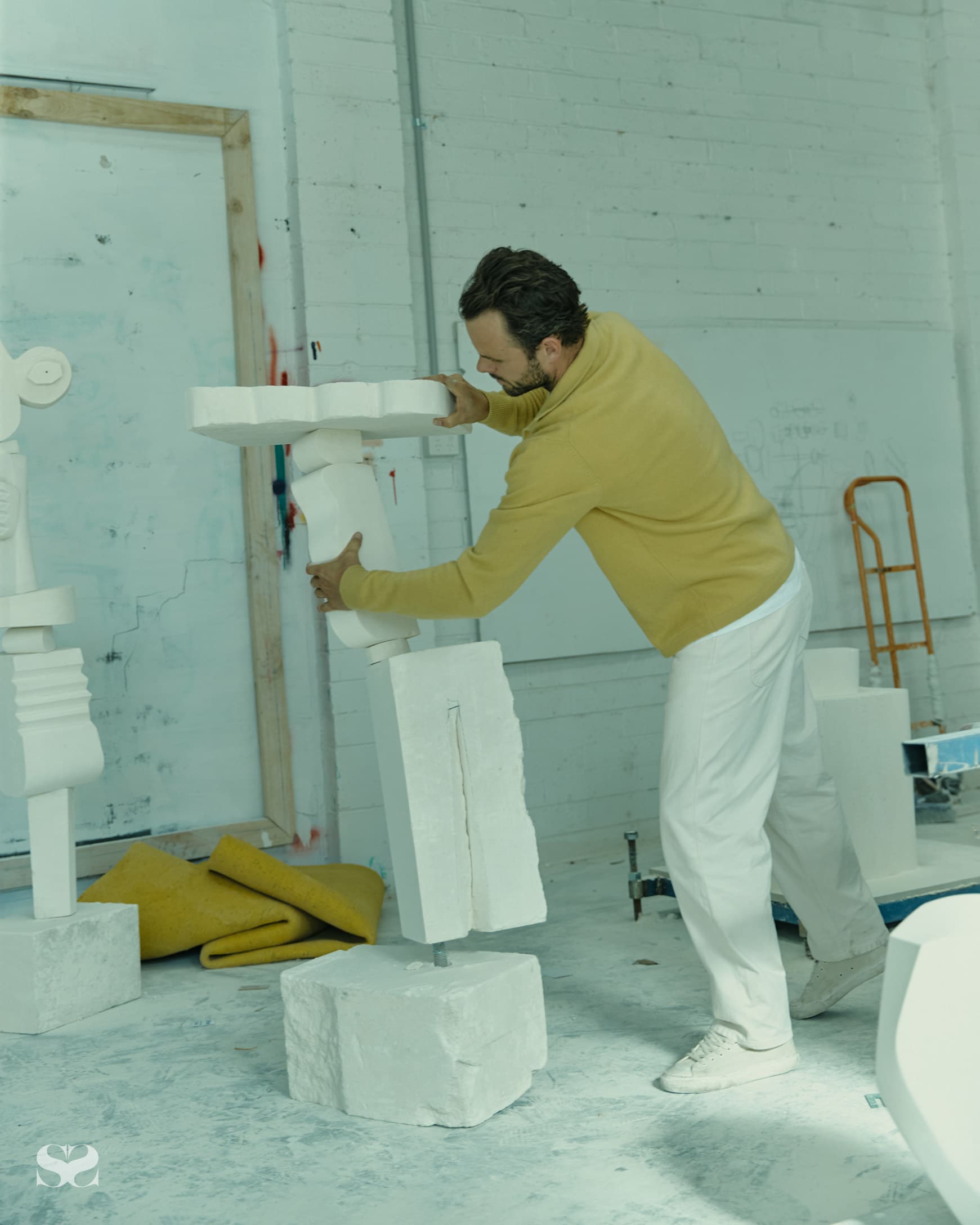
“I was really anti construction and stonemasonry when I was at uni. I was kind of like, ‘I’ll never go back and do this’,” Clark explains. “But he pushed me into the direction of using the materials I was already aware of ... [He] said that ‘you need to use everything that you’ve done in the past, all your experiences. Blend that together with what you’re learning now and produce work’ …”
After seven years of continuous study, Clark felt drained. So when an opportunity arose to play soccer in Melbourne he jumped at the chance, and from the moment Clark arrived, he felt at home. “I just loved living here, loved that opportunity. So I went back into being a stonemason, working on building sites and whatnot … It was good, I was quite happy. But then after about four years I started to get back into wanting to do something creative.”
Clark secured a studio space in the city and shortly after, a friend requested that he create some custom works for a photo shoot. “I made her a stone plinth, and everyone lost their shit, said it was amazing. That’s when it all started. People were like ‘wow that must’ve taken you months to make’ … It honestly took me a day to make it. And I was like, ‘right I’m onto something here’.” The plinth was the launching pad for denHolm studio, a nod to the place it all started.
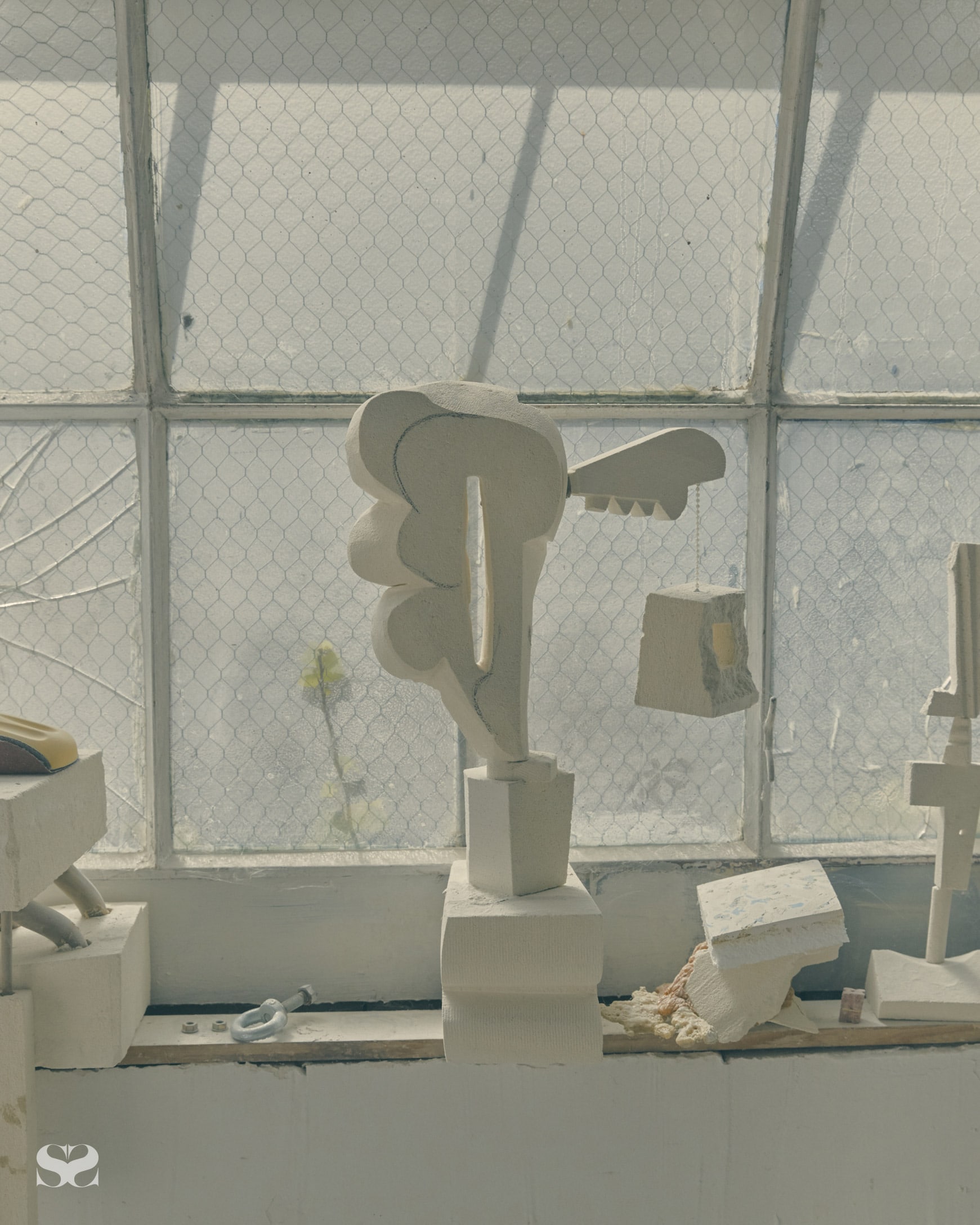
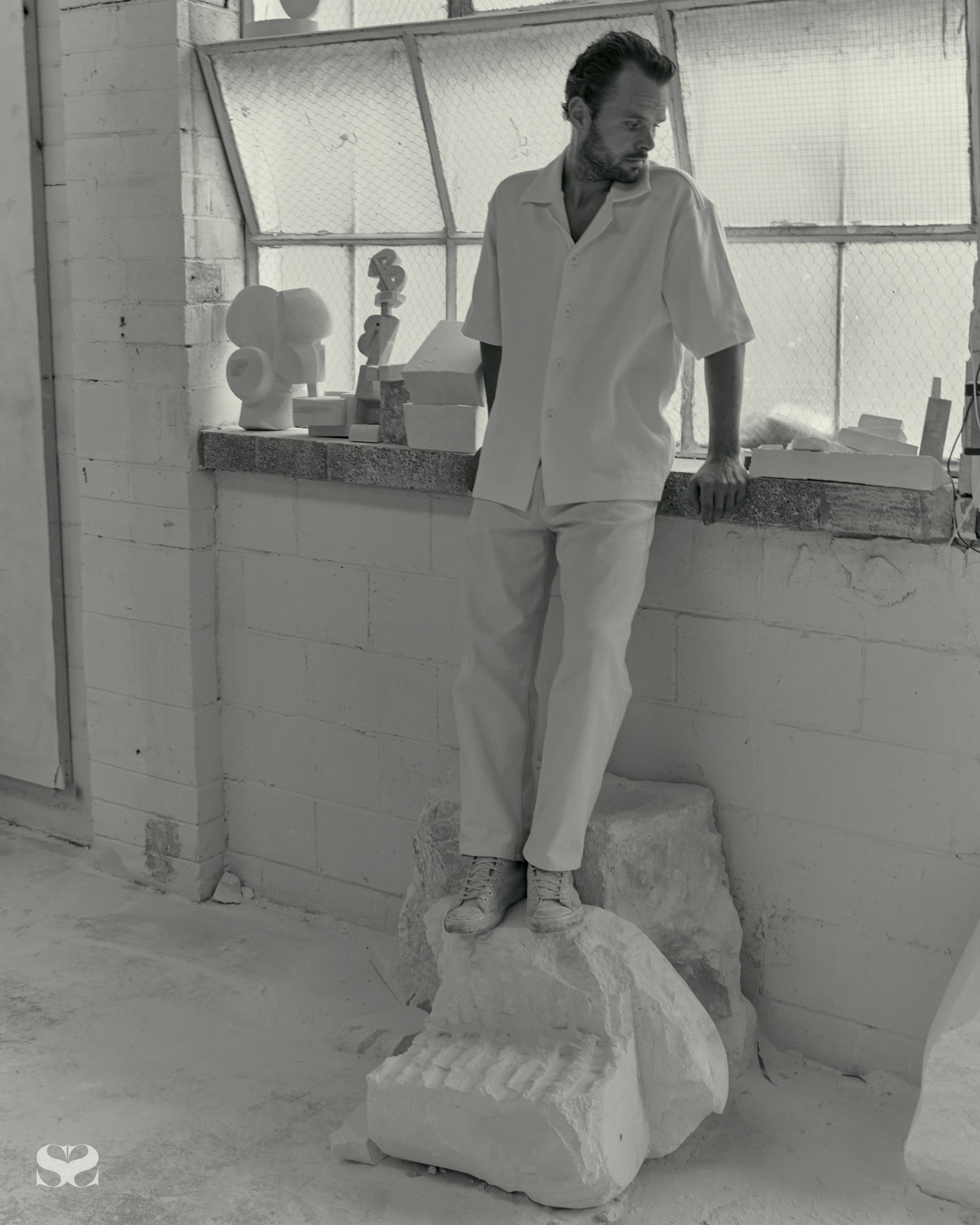
Inspired by 19th century architecture, fashion, art, literature (“I’m reading books all the time on nanotechnology”) and the minutia of day-to-day experience, Clark’s designs begin first as illustrations, rendered on a page or the walls of his studio space. “The studio is kind of an expansion of my work … every corner of the place has been changed since I went in, and it continually changes,” describes Clark. “Walls get painted, drawn on, partition walls that move; it’s a constantly changing landscape within the studio. I think it’s so you feel really comfortable in your environment, and the fact that I can do whatever I want. I’ve always got that running through my head – I want to be able to do whatever I want. If I can’t do that I feel stifled.” After the idea takes form, Clark will use chisels, axes or drills on the limestone (or a combination of stone and concrete mix) and manipulate the slab until the shape of a planter, plinth, table or sculpture is revealed. Always, with music: “Anything from classical piano stuff to hip-hop … predominantly the music I listen to the most is probably Radiohead. Something you can get lost in and emotional, can drive you.” There’s one caveat, he says, “It still has that sort of ‘fuck you’ attitude.”
Clark’s desire for flexibility is also manifested in his creative process: “When I make work for myself I’m never finished ... When something leaves the studio, it’s only finished because someone wants to buy it, and we finish it at that moment in time. Stuff that I’m working on ongoing in the studio I won’t seal or do any of the final treatments on until it leaves the studio as sold.”
Acknowledging his aversion to the idea of ‘finishing’ a piece, his refusal to settle, Clark jokes about his slim chances of finding professional happiness. “It’s a horrible world,” he laughs. “I’m not going to be happy! I mean, I’m happy in moments but I’m always striving and moving.” Rather, validation finds form in the creation, as opposed to an end product. “[Success is] knowing that tomorrow I’m going to do what I want to do, and that is: work creatively on any subject, with limestone, cement, metal. I don’t foresee myself just in limestone, it just happens that this has ignited everything and got everything moving and people like it and want to buy it, so I’ll keep making it. But I don’t see myself working in the one medium for the rest of my life. The one simple fact of what makes me happy is that I know I can create.” For Clark, the future holds myriad possibilities. “That’s what excites me. I’ve got a plethora of different materials up at the studio, I just can’t find enough time to learn about them all.”
As for now, this man of stone feels gratitude for the way his past has fallen into his present. “Quite lucky with how it all worked out,” he pauses. “Or maybe it was always going to work out – I don’t know.”
PHOTOGRAPHY Adrian Price
FASHION Natalie Petrevski
TALENT Steven John Clark
Special thanks to denHolm studio.



